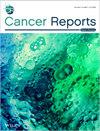Association Between Hormonal Factors and Risk of Lung and Upper Aerodigestive Tract Cancer in French Women: The E3N Prospective Cohort Study
Abstract
Background
Significant sex disparities exist in the incidence of lung and upper aero-digestive tract (UADT) cancers. Inverse relationships have often been observed between exposure to hormonal factors and these cancers. Data from epidemiological studies are still inconsistent.
Aims
We investigated the association between hormonal factors and the risk of cancers of the lung and UADT in French women.
Methods
E3N is a French prospective population-based cohort that recruited 98 995 women in 1990. We used a Cox proportional hazards regression models to estimate hazard ratios (HRs) and 95% confidence intervals (CIs) with age as the time scale. We also conducted a cluster analysis using the K-means method to assess distinct patterns of hormone exposure and the cancer risk associated with them.
Results
91 114 women were included (398 lung and 157 UADT). We highlighted 6 distinct exposure patterns of hormonal exposure, but no significant association was noted with cancer risk. Concerning individual factors, shorter menstrual cycles (≤ 24 days) were associated with a higher risk of developing female lung cancer even among never smokers (HR = 1.75, 95% CI = 1.01–3.01). Among never smokers, the risk of UADT was lower among women with at least 3 pregnancies compared to those with none (HR = 0.43, 95% CI = 0.20–0.91). Menarche under 12 years was associated with a non-significant increase in the risk of UADT cancer among never smokers (HR = 1.76, 95% CI = 0.95–3.26).
Conclusion
Menstrual cycle length was significantly associated with higher risk lung cancer, while UADT cancer was inversely associated with the number of pregnancies. Our findings are widely consistent with the commonly adopted hypothesis of oestrogen deficiency as a mechanism for UADT risk but not for lung cancer. While larger studies are needed to confirm these findings, our study is novel, particularly for UADT cancer since our study is one of the first longitudinal studies among never smokers.
Trial Registration: clinicaltrials.gov identifier: NCT03285230

 求助内容:
求助内容: 应助结果提醒方式:
应助结果提醒方式:


